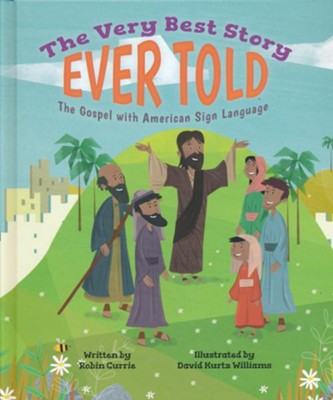Engaging the Whole Child in Your Books

The Big Bad Wolf said, “Then I’ll huff, and I’ll puff, and ……
Generations of children know just what to do next: BLOW the house down! Children engage with picture books by hearing the words and seeing the pictures. A sensory opportunity often overlooked is touch or movement, often called kinesthetic interaction.
How can we add that kinesthetic dimensions to Christian picture books?
Touch-and Feel (birth-5 years)
Board books may feature items attached to the page or holes cut to reveal textures. Feel the woolly coat. The adult guides the very young child’s hand to experience sensations perhaps for the first time.
Lift the Flap (6 months to 3 years)
The next level of interacting involves lifting a separate piece of the book to reveal part of the story itself. What’s behind the bush? The child and adult physically engage in lifting a flap and determine how the figure under the flap relates to the story line.
Interactive directions in the text (6 months to 6 years).
The child is invited to make a noise or motion in response to the story. Touch fingertips together for a mountain. These very simple motions bring the child into the words of the story, increasing engagement between reader and listener.
American Sign Language (3-8 years)
A much more significant level of interaction is in using American Sign Language to replace certain words in the text, child actually tells the story with the reader. LOVE The sign for love is to cross your arms over your chest. Remembering the signs remind the listener of the event or concept.
Retelling (5-12 years)
Beyond the book methods require children old enough to remember without needing to see the pictures. Let’s have three volunteers to be Elijah, the wind and the broom tree. Directions in the book guide reader and listener to act out all or part of the story or tell it in their own words to others.
Creative Expression (6-12 years)
Creative expression expands the story experience in drawing, building, or work with craft materials. Draw a mural of creation. These activities can be done by any number of children in a home or Sunday school setting.
Which one to use in the story you are writing? In general, the younger the child, the simpler the language and more immediate the response will be. But any story for any age can be more memorable with invitations to kinesthetic response.
This post is an excerpt from Robin’s chapter in Writing & Selling Children’s Books in the Christian Market: From Board Books to YA by Michelle Medlock Adams and Cyle Young, Iron Stream Media, 2020.
*Be sure to sign up to receive updates of each new post on our Christian Children’s Authors blog. Follow us for new book news, free resources, parenting tips, and encouragement!
#christianchildrensauthors #christianbooks #christianauthors #christianwriters #christianteachers #christianbooksforkids #christianchildrensbook #christianchildrensbooks #christianhomeschool #Engagingthewholechildinyourbooks
by Robin Currie

Great ideas! Thanks for sharing, Robin!
Appreciate hearing from you. Glad you found the article useful.
Thanks for a great post, Robin! When I was teaching I found kinesthetic interactions always made the lesson more memorable.
I appreciate any chance to wiggle! Thanks.